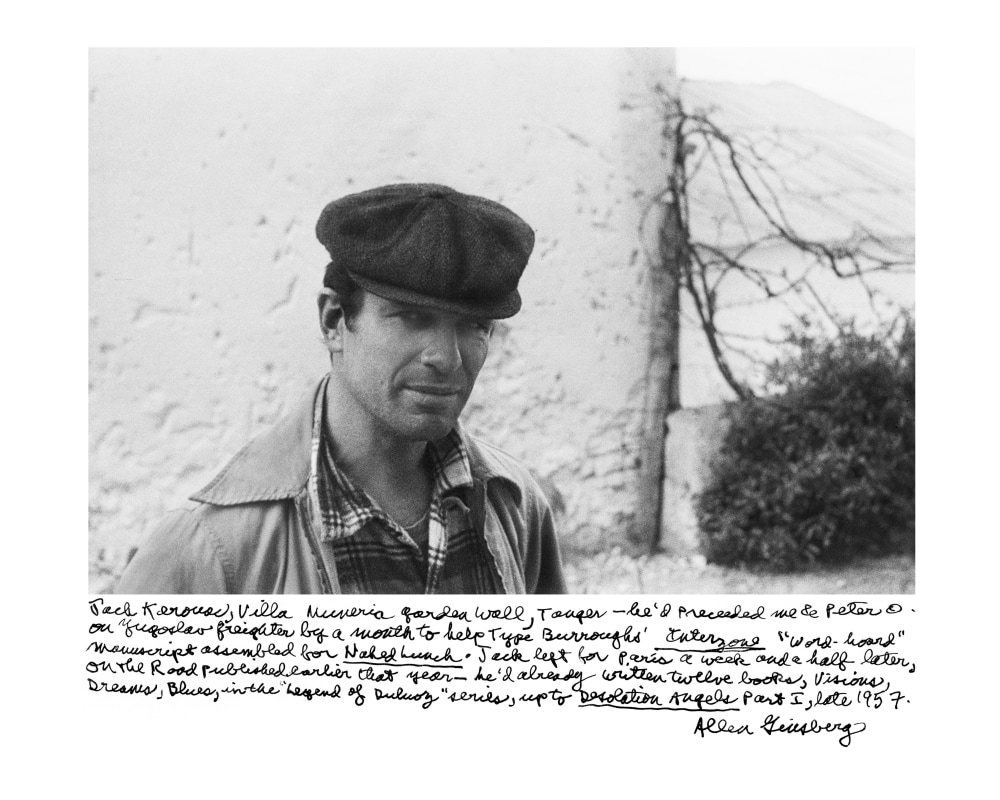
August 30, 2023
The Guardian
Beats connection: Allen Ginsberg’s inner circle – in pictures
A new exhibition of the Howl author’s intimate personal photographs finds him hanging out with Jack Kerouac, William Burroughs and Patti Smith
Muses & Self: Photographs by Allen Ginsberg is at Fahey Klein Gallery, Los Angeles until 23 September. All photographs: Allen Ginsberg/courtesy of Fahey Klein Gallery, Los Angeles
This exhibition of Ginsberg’s personal photographs balances our understanding of the outspoken poet and most prominent figure of the Beat Generation.
These subtle portraits are filled with complex realisations about his life that are echoed in the meticulous handwritten captions often incorporated beneath the images.
In his creative works, Ginsberg was known to blend text and image metaphorically – here he does it literally by writing captions on his photographs.
At his core, Allen Ginsberg was a witness and chronicler of the world; his profound admiration for the beauty of the vernacular, intense observation and celebration of the present moment guided his photography and poetry. The photographs included in this exhibition are joyful, often tender, sometimes profound, while at other times humorous – and capture Ginsberg’s numerous meaningful relationships.
Ginsberg initially picked up a used Kodak Retina camera to take snapshots of the playful nature of his now-famous friends, including writers Jack Kerouac, William S Burroughs, Gregory Corso and Neal Cassady.
Ginsberg lost this beloved camera, and his photographic tendencies went dormant. Twenty years later he rediscovered negatives and prints, igniting his second dalliance with photography.
With encouragement from photographers Robert Frank and Bernice Abbott, Ginsberg invested in better photographic equipment and made new portraits of longtime friends and new acquaintances – including Francesco Clemente, Jean-Michel Basquiat, Toni Morrison and Patti Smith.
‘The poignancy of a photograph comes from looking back to a fleeting moment in a floating world’ – Allen Ginsberg
Ginsberg had two distinct photographic periods, from the early 1950s into the 1960s, and then the 1980s until his death in 1997.
Allen Ginsberg was born in Newark, New Jersey in 1926, and emerged as a prominent voice in the countercultural movement of the 1950s and 1960s. His most famous work, Howl, was a powerful and controversial poem that challenged societal conventions and explored themes of sexuality, spirituality and political dissent. It became a touchstone for a generation seeking liberation and authenticity.
In conjunction with the exhibition of photographs taken by Allen Ginsberg, the Fahey Klein Gallery hosts a preview of A Picture of My Mind: Poems Written by Allen Ginsberg’s Photographs, a collection of ekphrastic poems generated by an AI-powered version of Ginsberg’s own text corpus in response to specific photographs.
Developed in collaboration with poetry collective theVERSEverse, recognised as leaders in the contemporary linguistic avant garde, and theVERSEverse member Ross Goodwin, a pioneering code poet whose “word.camera” (2018) turns digital image data into text, A Picture of My Mind enacts a dialogue between Ginsberg’s portraiture and poetry, and is supported by the Allen Ginsberg Estate and the Tezos Foundation.
‘My poetry has always been a picture of my mind moving’ – Allen Ginsberg, Illuminated Poems
Ginsberg’s relentless pursuit of personal and artistic freedom made him an iconic figure, and his activism and advocacy for social justice, including his involvement in anti-war and gay rights movements, further solidified his place in American literary and cultural history. Through his groundbreaking poetry and fearless exploration of taboo subjects, Ginsberg remains an enduring symbol of artistic rebellion and the search for individual and collective enlightenment.